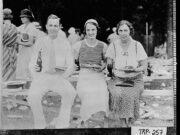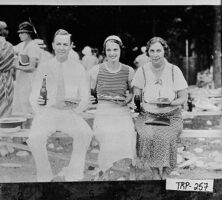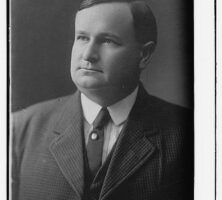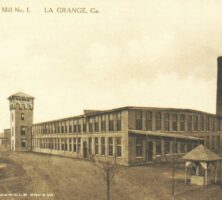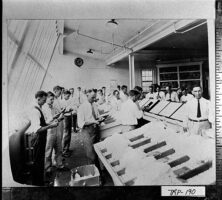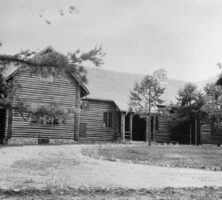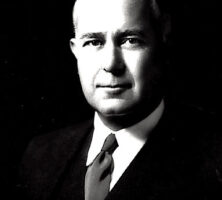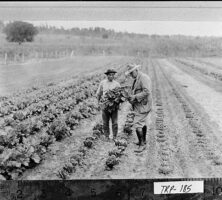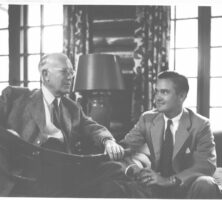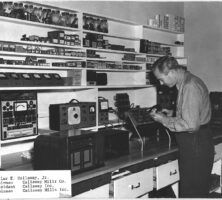The Callaway family has changed the face of Georgia by building and operating textile mills, developing and maintaining gardens, and supporting cultural, humanitarian, and religious projects. Callaway family members founded what became Callaway Mills in 1900 and operated them until 1968. They established Callaway Gardens in 1952 and remain active in its management. The family has also given millions of dollars to a wide variety of projects through the Callaway Foundation and the Fuller E. Callaway Foundation.

Image from JR P
Fuller Earle Callaway
Members of the Callaway family have lived in west Georgia since the mid-nineteenth century. Fuller Earle Callaway (1870-1928) was born in Troup County to the Reverend Abner Reeves Callaway and his first wife, Sarah Jane Howard. His mother died when he was eight years old. At age ten, Fuller received a nickel for bringing water to men at a barn raising. The next day, he walked eight miles into LaGrange. After realizing that the nickel would not buy the boots he wanted, he chose three spools of thread and went back to the country. He soon found three housewives who paid five cents a spool, and he thereby made a dime on his first commercial transaction.
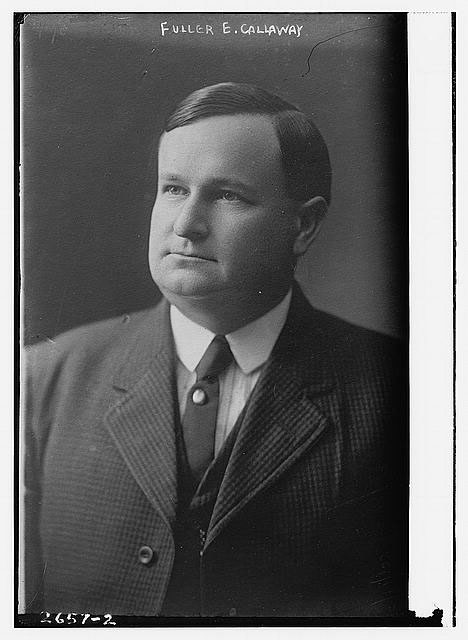
Courtesy of Library of Congress, Prints and Photographs Division
Young Fuller continued to peddle and to farm his own tract of land. His formal education was limited to about a year in public schools in Troup County. At age eighteen, he opened a five-and-ten-cents store with $500 he had saved. He later opened four other stores and entered the wholesale business. In 1895 Callaway invested in LaGrange’s first modern textile mill. Dixie Mills opened with local fanfare and New England management; nonetheless, the mill began to struggle financially within a couple of years. Other investors convinced Fuller to take over management. They threw out the secondhand equipment and brought the mill onto solid economic footing. After Fuller got his money back, he decided to leave the textile industry.
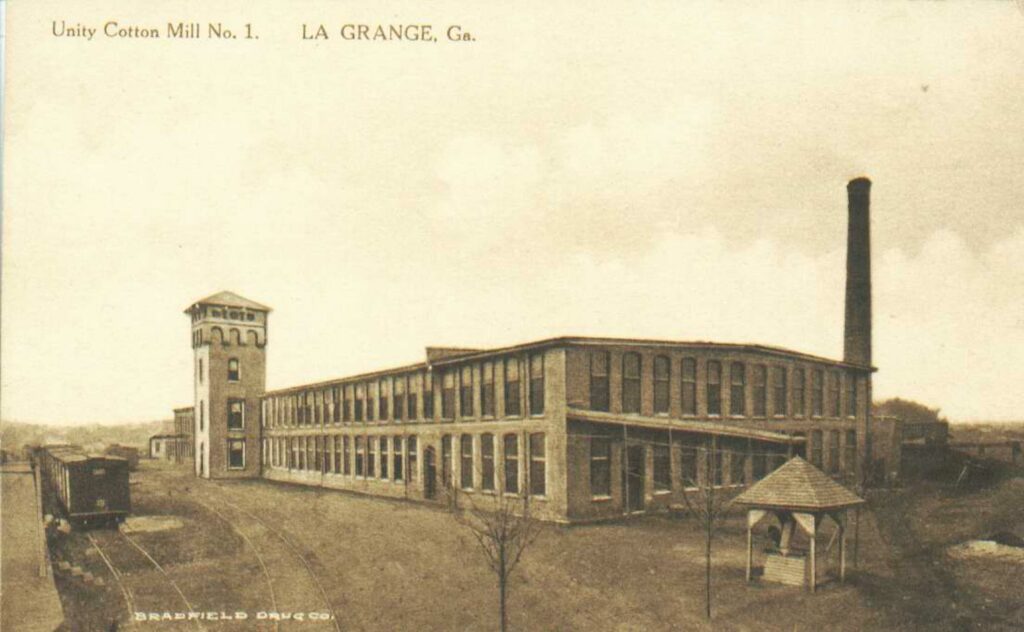
Courtesy of Troup County Archives, LaGrange
Soon, however, the lure of the industry called again, and townspeople, including Fuller, invested in a new project. Unity Mills (later Kex Plant) shipped its first cotton in 1901. Fuller served as secretary-treasurer of the company, a position he would hold in other mill projects as well. Between 1900 and 1920, Fuller and others opened several mills located within 100 miles of LaGrange.
Fuller stressed the importance of the social and educational development of employees as well as their economic well-being. Mill houses, churches, schools, parks, greenhouses, and other amenities were built along with the mills, but Fuller did not open company stores that would have competed with existing businesses. He was widely quoted as saying, “I make American citizens and run cotton mills to pay the expenses.” Such paternalistic interest in his workers also served to keep their morale up and thus to keep unionizing efforts from either within or outside the mill community at bay.
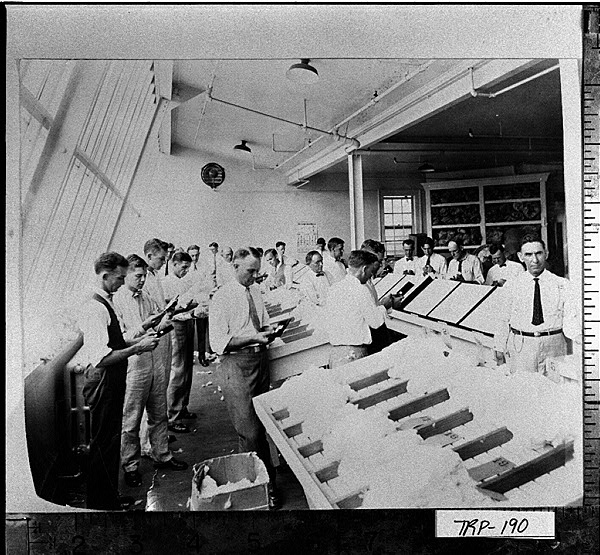
Courtesy of Georgia Archives.
Fuller also established a variety of businesses, including banks, warehouses, and an insurance company. He held positions in national textile associations, and he was president of the American Cotton Manufacturers Association. He also served as a railroad commissioner of Georgia from 1907 to 1909 and was appointed by U.S. president Woodrow Wilson to the Conference on Industrial Relations in 1919.
Fuller said that one of his greatest accomplishments was marrying Ida Jane Cason of Jewell in 1891. They met while she attended Southern Female College in LaGrange and after their marriage lived frugally on what Fuller termed “cash street rather than mortgage street.” Between 1914 and 1916, he engaged architect Neel Reid, of Hentz and Reid, to design their Hills and Dales home on Vernon Road in LaGrange. The Italian style of the home complemented the gardens that Sarah Coleman Ferrell had planted on the site beginning in 1841. Fuller and his wife had two sons, Cason Jewell Callaway and Fuller Earle Callaway Jr.
Cason Jewell Callaway
Like his father, Cason Jewell Callaway (1894-1961) spent years as a textile manufacturer, a businessman, and a state agricultural leader. He achieved his greatest success in developing Callaway Gardens after retiring from Callaway Mills. A native of LaGrange, Cason attended Bingham Military School in Asheville, North Carolina, and the University of Virginia in Charlottesville before getting a degree from the Eastman School of Business in Poughkeepsie, New York. After finishing school, he returned to Troup County to work in the mills. He developed Valley Waste Mills into a commercial success by refining recycling operations.
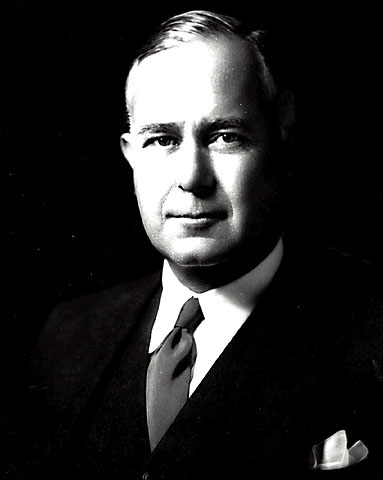
Courtesy of Callaway Gardens
During World War I (1917-18) Cason joined the U.S. Navy and worked in the Navy Supply Corps’ Bureau of Supplies and Accounts at Navy Headquarters in Washington, D.C. After Cason returned to LaGrange, his father stepped away from active mill management, and Cason began managing the mills. He married Virginia Hollis Hand of Pelham, and the couple had three children, Virginia, Cason Jr., and Howard Hollis (known as “Bo”).
Convinced in the 1920s that the national economy was heading for rough times, Fuller advised his two sons to choose one business arena and sell off their other holdings. The brothers sold most of their businesses and created a new corporation, Callaway Mills, which oversaw mill management. One key to Cason’s success in mill management proved to be salesmanship, a trait he shared with his father. Cason established relations with General Motors, entered the rug and tire-cord business, and hired managers and salesmen to market mill products. Thanks to careful stewardship and to profits made from selling the other businesses, Callaway Mills survived the Great Depression without closing any plants, while management kept at least one member of every mill family fully employed.
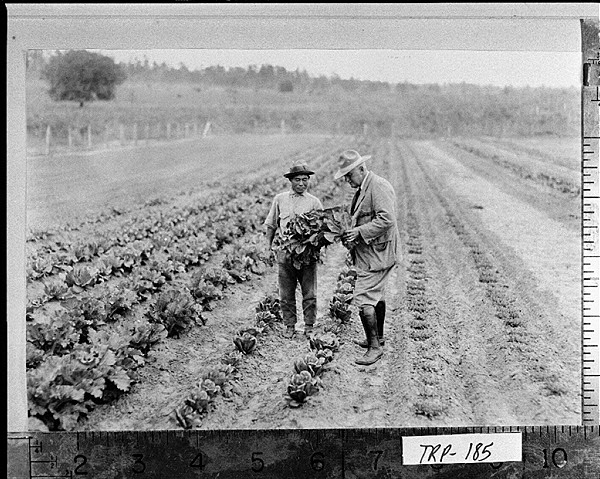
Courtesy of Georgia Archives.
In 1934 and 1935 Callaway Mills suffered two employee strikes. Eventually management won out and strikers left the area, but the economic stresses of the decade led Cason to retire. He became chairman of the board of Callaway Enterprises and served until 1937; his brother, Fuller Jr., became president. Cason accepted national positions, served on the Board of Regents of the University System of Georgia, and was a director for various national companies.
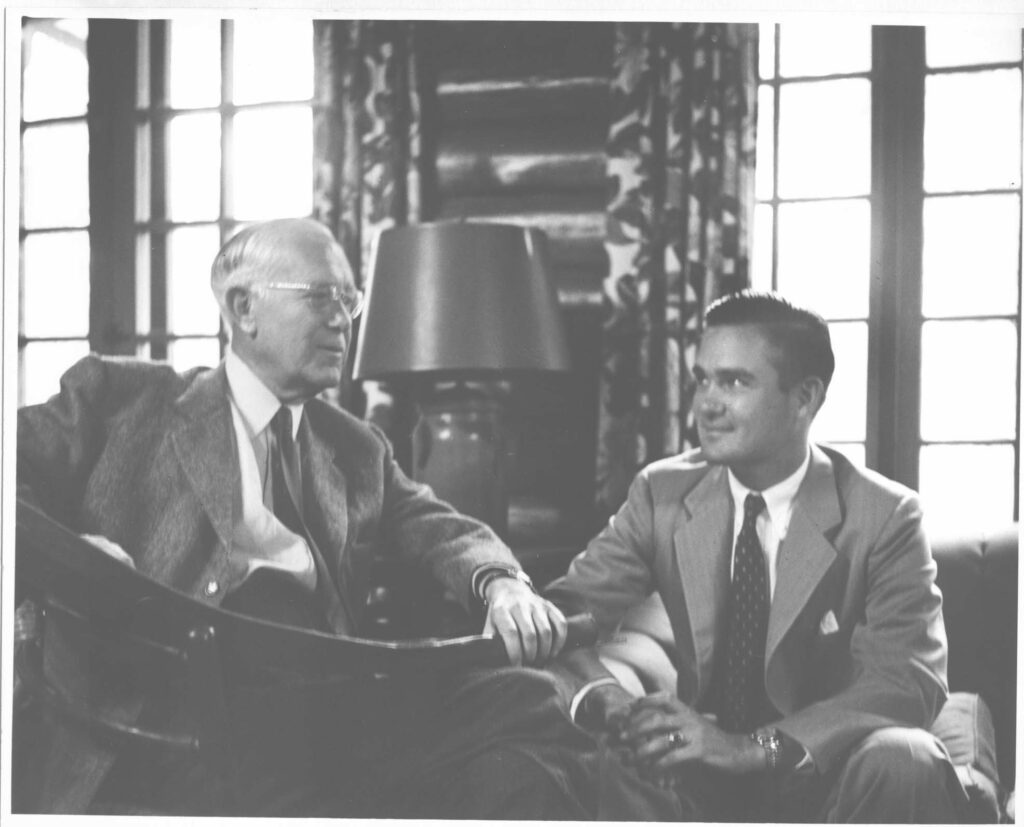
Courtesy of Troup County Archives, LaGrange
During the 1920s and 1930s, Cason became close friends with Franklin D. Roosevelt, a part-time resident of west Georgia. Roosevelt began visiting Warm Springs in October 1924, while trying to overcome the effects of polio. He and Cason shared a love of the people, a desire to improve the land, and an interest in farming, even though they disagreed on politics. In 1932, the year Roosevelt was elected president of the United States, Cason led fund-raising efforts for Georgia Hall, the new administration building for the Warm Springs Foundation (later the Roosevelt Warm Springs Institute for Rehabilitation). The foundation was funded by Georgians as a tribute to their new president.
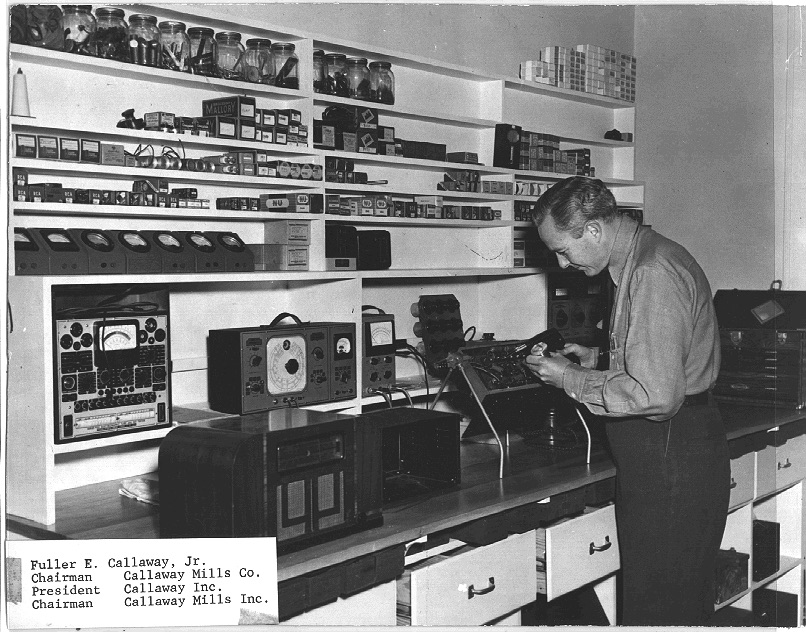
Courtesy of Troup County Archives, LaGrange
Following his retirement from the mills, Cason set up an experimental farming operation of 40,000 acres at his Blue Springs Farms near Hamilton, just south of LaGrange. He worked with the University of Georgia to develop other showplace farms as part of the One Hundred Georgia Better Farms program, which encouraged better farm practices, between 1944 and 1947. The program encouraged using machinery and developing fine production—whether in beef, wool, or fruits and vegetables. The program officially ended in 1950.
In 1947 Cason had a heart attack. His focus shifted from agriculture to the development of what later became Callaway Gardens, situated on former cotton fields that had been stripped of nutrients by intensive farming. The gardens opened in May 1952. After Cason’s death, his son Bo oversaw operations of the gardens for many years.
Fuller Earle Callaway Jr.
Born in LaGrange, Fuller Earle Callaway Jr. (1907-92) graduated from LaGrange High, Georgia School of Technology, and the Eastman School of Business in Poughkeepsie, New York. He started working in the mills at age fourteen and became president of Callaway Mills in 1935. He was a community leader and a benefactor of the town of LaGrange, LaGrange College, and the Georgia Institute of Technology. Fuller Jr. operated Callaway Mills for many years and established foundations that gave away millions during his lifetime.
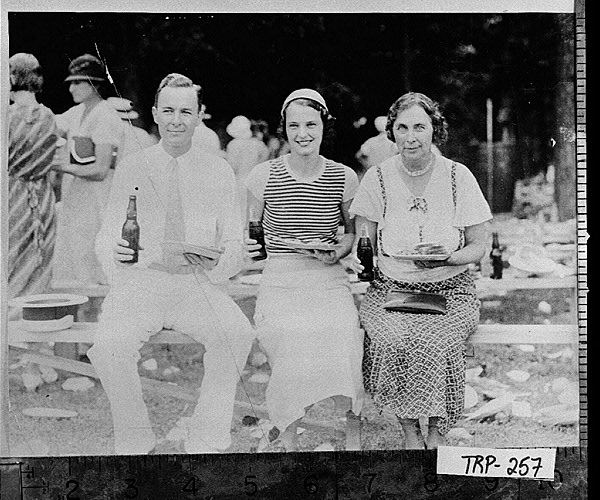
Courtesy of Georgia Archives.
In 1948 Fuller Jr. took a ten-year leave from mill management. During those years, he painted, worked with electronics, and assembled a herd of Hereford cattle. He then returned to the helm of Callaway Mills and successfully guided operations until April 1968, when he shocked many by selling Callaway Mills for cash to Roger Milliken and Deering-Milliken Company of Spartanburg, South Carolina.
In 1930 Fuller Jr. married Alice Hinman Hand of Pelham. Fuller and Alice had met years earlier when their siblings, Cason and Virginia, married. Fuller and Alice had two children, Ida and Fuller III. They lived at the Hills and Dales estate of his parents, where Alice worked for decades to preserve the home and gardens. Since Alice’s death, the gardens have been renamed Ferrell Gardens at Hills and Dales and are open to the public on a limited basis.
Fuller Jr. helped to found the Institute of Textile Technology in Charlottesville, Virginia, and along with two other alumni, the Georgia Tech Research Institute, which supports research in all areas of the sciences. In 1943 he organized the Callaway Community Foundation (later the Callaway Foundation). The foundation carried on the work of the Textile Benefit Association organized by his father in 1919. The Callaway Foundation owned all assets of Callaway Mills and has made contributions from income to religious, charitable, and educational organizations. More than $275 million from the foundation have has been given to local, state, and national groups since 1943.


